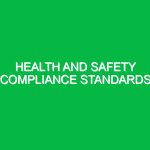Offshore operations encompass a wide array of activities, from oil and gas extraction to renewable energy ventures like wind farms. Given the challenging environments and inherent risks, safety in offshore operations is not just a regulatory requirement but a fundamental commitment to the well-being of workers and the environment. This guide delves into the critical aspects of safety in offshore operations, highlighting potential hazards, best practices, and the regulatory framework that governs these vital activities.
Understanding Safety in Offshore Operations
Safety in offshore operations refers to the measures and practices designed to protect workers, the environment, and equipment from potential hazards associated with offshore activities. The Health, Safety, and Environment (HSE) domain plays a pivotal role in establishing protocols that mitigate risks and enhance operational efficiency. Whether it’s a drilling rig in the North Sea or a wind turbine installation off the coast of California, adherence to safety standards is essential.
In an industry where the stakes are incredibly high, the relevance of safety cannot be overstated. A single lapse can lead to catastrophic incidents, affecting not just personnel but also surrounding ecosystems and communities. For instance, the Deepwater Horizon oil spill in 2010 serves as a grim reminder of what can occur when safety protocols are overlooked. Such incidents not only have immediate impacts but also long-term repercussions on company reputations and environmental health.
Identifying Hazards and Risks in Offshore Operations
Offshore operations are fraught with various hazards, each presenting unique risks. Understanding these potential dangers is the first step toward effective safety management. Here are some key hazards associated with offshore operations:
1. Weather-Related Hazards
Offshore environments are often subject to unpredictable weather conditions, including storms, high winds, and rough seas. Such conditions can jeopardize the safety of personnel and equipment. For example, during a storm, a drilling rig may experience significant movement, putting workers at risk of falls or equipment failure.
2. Equipment Failure
Machinery and equipment used in offshore operations are complex and can fail due to wear and tear, improper maintenance, or malfunctions. A case in point is a hydraulic system failure, which can lead to uncontrolled movements of cranes or drilling equipment, endangering lives and causing operational delays.
3. Chemical Hazards
Offshore operations often involve the handling of hazardous materials, such as drilling fluids and fuel. Exposure to these chemicals can lead to serious health issues, including respiratory problems and skin irritations. The storage and disposal of these substances require stringent safety measures to prevent spills and leaks.
4. Confined Spaces
Many offshore structures contain confined spaces, such as tanks and vessels, where oxygen levels may be low, and toxic gases can accumulate. Working in these areas poses significant risks, necessitating specialized training and equipment to ensure safety.
5. Human Factors
Human error remains one of the most significant contributors to accidents in offshore operations. Fatigue, inadequate training, and poor communication can lead to mistakes that have dire consequences. A well-known incident involved a crew member misreading equipment gauges, resulting in an uncontrolled blowout.
Best Practices for Ensuring Safety in Offshore Operations
To mitigate the identified hazards, offshore operations must implement a range of safety precautions and best practices. Here are several actionable strategies:
1. Comprehensive Training Programs
Regular training is crucial for ensuring that all personnel are equipped to handle the unique challenges of offshore work. Training should encompass emergency response, equipment operation, and hazard recognition. For example, a company operating in the Gulf of Mexico implemented a rigorous training program, resulting in a 30% reduction in incidents over two years.
2. Regular Maintenance and Inspections
Scheduled maintenance and inspections of equipment can prevent failures and accidents. Operators should adhere to a strict maintenance schedule and keep detailed records of inspections. Utilizing condition monitoring technology can also help in predicting equipment failures before they occur.
3. Implementing Safety Management Systems (SMS)
A Safety Management System (SMS) provides a structured approach to managing safety risks. It involves continuous risk assessment, operational planning, and regular audits. By establishing an SMS, offshore operators can create a culture of safety, ensuring that safety considerations are integrated into every aspect of operations.
4. Emergency Preparedness
Preparedness for emergencies is paramount. Offshore facilities should have well-defined emergency response plans, including evacuation procedures and communication protocols. Regular drills help ensure that all personnel know their roles and can act swiftly in a crisis. For instance, a North Sea operator conducted quarterly drills that significantly improved response times during emergencies.
5. Use of Technology
Advancements in technology can enhance safety in offshore operations. Drones, for example, can be used for inspections, reducing the need for personnel to work at height or in hazardous environments. Additionally, real-time monitoring systems can provide alerts regarding equipment anomalies, allowing for timely interventions.
Regulatory Framework Governing Offshore Safety
Numerous regulations and standards govern safety in offshore operations. These frameworks ensure that operators adhere to established safety practices and protect both personnel and the environment. Some key regulations include:
1. International Maritime Organization (IMO) Standards
The IMO sets global standards for the safety, security, and environmental performance of international shipping. These standards include guidelines for offshore operations, particularly in relation to emergency preparedness and pollution prevention.
2. Occupational Safety and Health Administration (OSHA) Regulations
In the United States, OSHA regulations provide guidelines to ensure safe working conditions for employees. Offshore operations must comply with specific OSHA standards pertaining to construction and maritime work, addressing everything from fall protection to hazardous materials handling.
3. The Oil and Gas Authority (OGA) Guidelines
In the UK, the OGA oversees the safety and efficiency of oil and gas operations. Their guidelines emphasize the importance of risk management, operational integrity, and continuous improvement within the industry.
4. International Organization for Standardization (ISO) Standards
ISO standards, particularly ISO 45001 for occupational health and safety management systems, provide frameworks for organizations to improve employee safety and reduce workplace risks. Adopting these standards can enhance an organization’s credibility and operational efficiency.
Conclusion
Safety in offshore operations is a multifaceted endeavor that requires a proactive approach to identify hazards, implement best practices, and adhere to regulatory standards. By prioritizing safety through comprehensive training, regular maintenance, and the integration of technology, offshore operators can significantly reduce risks. The commitment to safety not only protects workers and the environment but also enhances operational efficiency and company reputation.
As the offshore industry continues to evolve, staying ahead of safety challenges will be essential. By fostering a culture of safety and continuous improvement, organizations can navigate the complexities of offshore operations while ensuring the well-being of their workforce and the ecosystems they impact.


